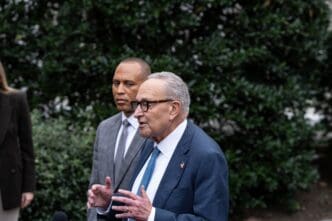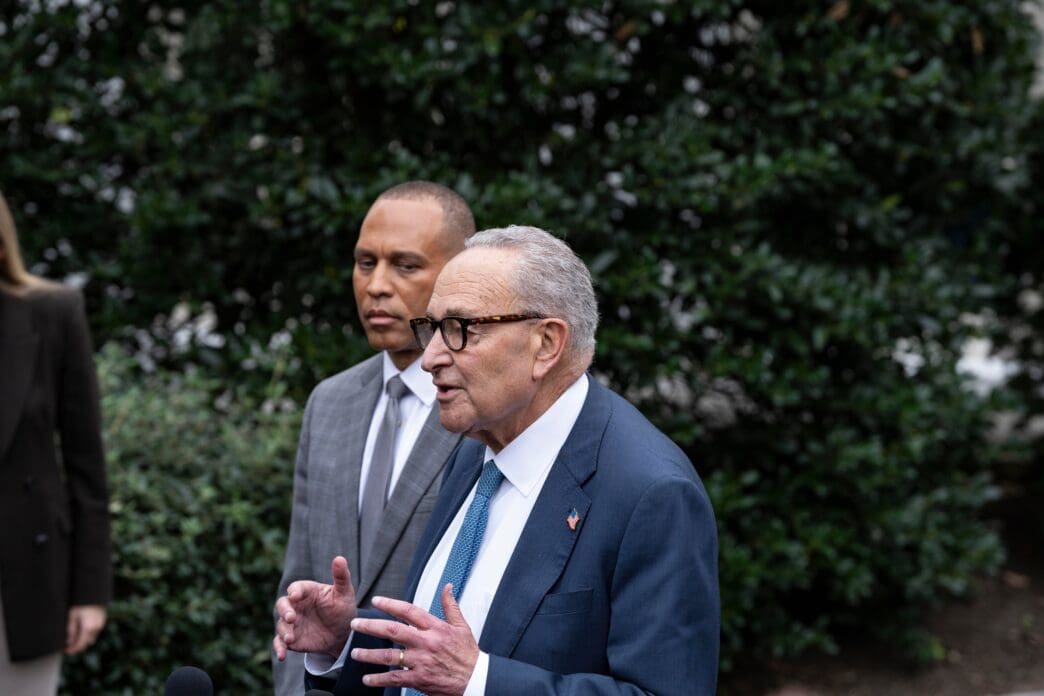Executive Summary
The Story So Far
Why This Matters
Who Thinks What?
The United States government entered a shutdown on Wednesday, October 2, 2025, as a political impasse between Democrats and Republicans left federal agencies without funding. Both parties have engaged in a blame game, with each side reportedly calculating a greater political advantage in the shutdown than in keeping the government open. The White House has threatened mass firings of federal workers and halted billions in public funds, while Democrats are emphasizing the potential for increased healthcare costs for millions of Americans.
Political Maneuvering and Blame
The initial phase of the shutdown has seen both the White House and Democratic leaders adopt aggressive strategies. The White House has taken a firm stance, threatening extensive layoffs of federal employees and freezing funds for significant infrastructure projects in Democratic-led states, aiming to pressure Democratic leaders.
Democrats, conversely, have focused their message on healthcare, asserting that President Trump’s administration would rather keep the government closed than address rising health insurance premiums. They are advocating for an extension of Affordable Care Act subsidies and a reversal of Medicaid cuts.
Despite the deepening partisan divide, early indications of political strain have emerged, suggesting potential cracks in party unity. Behind-the-scenes discussions have reportedly begun in the Senate, and some Republicans have expressed disquiet regarding President Trump’s assertive tactics.
Trump’s Unpredictable Approach
The current crisis is complicated by President Trump’s history of unpredictable political actions. Analysts note that his past behavior includes abruptly altering strategies and seeking deals that can undermine his own party’s carefully laid plans, making conventional political calculations challenging.
In a notable shift from traditional party stances, Democrats, who typically advocate for government services, effectively contributed to the shutdown by using the Senate’s 60-vote filibuster. Meanwhile, Republicans, generally proponents of smaller government, voted to maintain federal operations, leading to some disorientation in the political narrative.
The Blame Game Intensifies
Historically, the party perceived as initiating a shutdown by demanding concessions for government funding often faces public blame. Democrats could be at risk of this, particularly as they used the government as leverage to secure policy changes against an administration that might be amenable to a shutdown.
However, if the shutdown prolongs and disrupts vital public services, it could rebound negatively on President Trump and the congressional Republican Party. President Trump’s approval rating stood at 43% in a recent New York Times/Siena poll, indicating vulnerability on most key issues.
Democratic Senate Minority Leader Chuck Schumer characterized the situation as “the Trump shutdown,” accusing Republicans of attempting to force a shutdown to avoid protecting American healthcare. This marks a firmer stance from Schumer compared to a previous shutdown threat in March.
White House Hardball Tactics
The White House has signaled its intent to escalate the impact of the shutdown. White House Press Secretary Karoline Leavitt warned of “imminent” layoffs, a move that would be unusual as past shutdowns typically involved furloughs rather than mass firings.
Beyond personnel threats, the White House Office of Management and Budget froze $18 billion in funding for two major infrastructure projects, the Hudson Tunnel Project and the Second Avenue Subway. These projects are located in New York, a state with prominent Democratic leaders, including Senator Schumer and House Democratic Minority Leader Hakeem Jeffries.
Vice President JD Vance has actively worked to undermine Democratic unity, suggesting that moderate Democrats are showing signs of wavering. Vance also sought to highlight divisions within the Democratic party, attributing the shutdown to Senator Schumer’s alleged deference to “far-left radicals.”
Healthcare as a Potential Solution
Despite the escalating tensions, a “whiff of encouragement” for Democrats has emerged regarding healthcare. House Republican Speaker Mike Johnson expressed some discomfort with the prospect of mass firings, acknowledging the impact on “hardworking American federal workers.”
North Dakota Senator Kevin Cramer also suggested that firing threats could be a negotiating tactic, warning of potential backlash at the polls. He noted that widespread layoffs could hinder efforts to unite moderate Democrats and Republicans in reopening the government.
Republicans have attempted to shift the healthcare narrative by claiming Democrats’ demands would extend health benefits to undocumented immigrants, a claim refuted by a CNN Fact Check. Several Republicans, including Vice President Vance and Senate Republican Majority Leader John Thune, have stated a willingness to discuss healthcare policy, but only after the government is reopened.
Democrats, however, remain skeptical of such assurances, citing past actions regarding Medicaid cuts and the refusal to extend ACA subsidies. They argue that these actions left them with no choice but to use leverage. Nevertheless, the ongoing debate around healthcare remains a central point of contention and could ultimately provide an “off-ramp” for resolving the shutdown.








